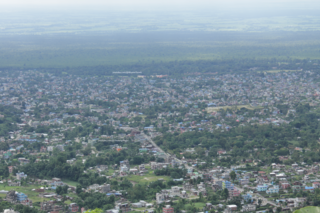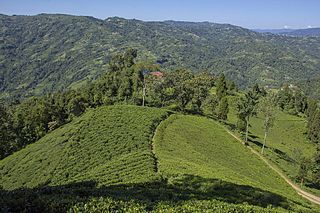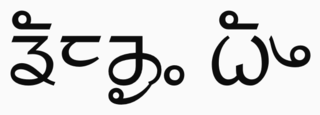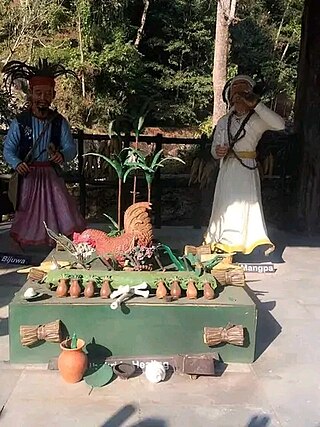
The Rai also known as Khambu and Jimee are ethnolinguistic group belonging to the Kirat family and primarily Tibeto-Burman linguistic ethnicity. They mainly reside in the eastern parts of Nepal, the Indian states of Sikkim, West Bengal and in southwestern Bhutan.

The Limbu (exonym) / Yakthung (endonym) or are a Tibeto-Burman ethnolinguistic group indigenous to the Himalayan region of eastern Nepal, Sikkim, Assam, Nagaland, northern West Bengal, and western Bhutan.

Biratnagar is a metropolitan city in Nepal, which serves as the capital of Koshi Province. With a Metropolitan Urban Agglomeration population of 244,750 as per the 2021 census, it is the largest city and fastest growing city in the province and also the headquarters of Morang district. As per the preliminary report of 2022 Nepal census, Biratnagar Metropolitan has an estimated city population of 243,927 excluding the suburban areas which are now very well connected to the old town. It is the administrative center of the Greater Birat Development Area which incorporates the cities of Biratnagar and its suburbs and towns of-Itahari-Gothgau-Biratchowk-Dharan primarily located on the Koshi Highway in Eastern Nepal, with an estimated total urban agglomerated population of 804,300 people in 159,332 households including the town of Ithari. Biratnagar is located 399 km (248 mi) east of the capital, Kathmandu, and 6 km (3.7 mi) north of the bordering town of Jogbani in the Indian state of Bihar. It is one of the major entry point in Nepal for Businessmen as well as Tourists who come to visit Nepal for various purposes.

Dharan is a sub-metropolitan city in Sunsari District of Koshi Province, in eastern Nepal, which was established as a fourth municipality in the Kingdom in 1958. It is the third most populous city in eastern Nepal after Biratnagar and Itahari. The Nepali word "dharan" means a saw pit. The rainforest from which the tree trunks came is still just on the edge of the city. Much later the British Gurkha camp opened in October 1960. The use of the camp by British Gurkhas finished in the mid-1990s. Dharan has an estimated city population of 173,096 living in 34,834 households as per the 2021 Nepal census. It is one of the cities of the Greater Birat Development Area which incorporates the cities of Biratnagar-Itahari-Gothgau-Biratchowk-Dharan primarily located on the Koshi Highway in Eastern Nepal, with an estimated total urban agglomerated population of 804,300 people living in 159,332 households. It is the largest city in the province number one by Area. It covers 192.32 square kilometers while Biratnagar and Itahari is 2nd and 3rd biggest cities by Area

The history of Sikkim begins with the indigenous Lepcha's contact with early Tibetan settlers. Historically, Sikkim was a sovereign Monarchical State in the eastern Himalayas. Later a protectorate of India followed by a merger with India and official recognition as a state of India. Lepchas were the main inhabitants as well as the Ruler of the land up to 1641. Lepchas are generally considered to be the first people, indigenous to Sikkim also includes Darjeeling.

Ilam district is one of 14 districts of Koshi Province of eastern Nepal. It is a Hill district and covers 1,703 km2 (658 sq mi). The 2011 census counted 290,254 inhabitants. The municipality of Ilam is the district headquarters and is about 600 km (370 mi) from Kathmandu.

Sunsari District is one of 14 districts in Koshi province of eastern Nepal. The district is located in the eastern part of the Outer Terai and covers an area of 1,257 km2 (485 sq mi). According to the 2011 Nepal census, the population was 753,328. The district headquarters is located in Inaruwa.

Taplejung District is one of 77 districts of Nepal and one of the 14 districts of Koshi Province. It is located deep in the Himalayas in Eastern Nepal with བོད to the north across the Himalayas. Taplejung is the third largest district of Nepal.

Iman Xin Chemjong Limbu, or Iman Singh Chemjong Limbu; was a Limbu historian, writer, linguist, lexicographer, folklorist, and philosopher of Nepal. Chemjong devoted his entire life to studying and documenting various facets of Kirat Limbu tradition and culture at a time when such activities were frowned upon and even punished by the Nepalese ruling elite as being subversive and "anti-national". Chemjong's research into and publication of Kirant history and culture challenged perceptions of the Nepalese official doctrine that showcased Nepal as a Hindu cultural monolith devoid of alternative narratives.

Limbu is a Sino-Tibetan language spoken by the Limbu people of Nepal and Northeastern India as well as expatriate communities in Bhutan. The Limbu refer to themselves as Yakthung and their language as Yakthungpan. Yakthungpan has four main dialects: Phedape, Chhathare, Tambarkhole and Panthare dialects.

The Kirati people, also spelled as Kirant or Kiranti, are Sino-Tibetan ethnolinguistic groups and indigenous peoples of the Himalayas, mostly the Eastern Himalaya extending eastward from Nepal to North East India.
The Limbuwan–Gorkha War was a series of battles fought between the king of Gorkha and the rulers of various principalities of Limbuwan from 1771 to 1774 AD. After the conquest of Majh Kirat and Wallo Kirat by the Gorkhas, they invaded Limbuwan on two fronts. One front was in Chainpur and the second front was in Bijaypur. Bijaypur was the capital of the Morang Kingdom of Limbuwan Yakthung Laje.
Limbuwan is an area of the Himalayan region historically made up of 10 Limbu kingdoms, now part of eastern Nepal. Limbuwan means "abode of the Limbus" or "Land of the Limbus". Limbuwan was incorporated into the Kingdom of Nepal by means of a collective Gorkha-Limbuwan Treaty with the kings of the ten Limbuwan kingdoms and their ministers.

Kirat Mundum, also known as Kiratism, or Kirati Mundum, is an Indigenous religion of the Kirati ethnic groups of Nepal, Darjeeling and Sikkim, majorly practiced by Yakkha, Limbu, Sunuwar, Rai, Thami, Jirel, Hayu and Surel peoples in the north-eastern Indian subcontinent. The practice is also known as Kirat Veda, Kirat-Ko Veda or Kirat Ko Ved. According to some scholars, such as Tom Woodhatch, it is a blend of shamanism, animism, and Shaivism. It is practiced by about 3.17% of the Nepali population as of 2021.
History of Limbuwan is characterized by the close interaction of Limbuwan with its neighbours independent and semi-independent rule characterized by autonomy for most of its time.

Tye-Angsi Sirijanga Thebe Limbu was an 18th-century Limbu scholar, educator, historian, linguist, leader, and philosopher of Limbuwan(Nepal) and Sikkim. He was formally known as Sirichongba and even more popularly known as "Sirijanga".

Koshi Province is the autonomous easternmost province adopted on 20 September 2015 by Constitution of Nepal. The province is rich in natural resources, tourist attractions, recreational activities, and natural beauty. The province covers an area of 25,905 km2 (10,002 sq mi), about 17.5% of the country's total area. With the industrial city of Biratnagar as its capital, the province includes major eastern towns of Birtamod, Sundar Haraincha, Damak, Dharan, Itahari, Triyuga Municipality and Mechinagar, and the Mount Everest, Kangchenjunga and Ama Dablam. Koshi River, the largest river of the nation, forms the province's western boundary. Under the First-past-the-post voting system issued by the Constituency Delimitation Commission, Nepal, the province hosts 28 parliamentary seats and 56 provincial assembly seats.
Buddhi Karna Raya was the last Limbu overlord king of Limbuwan. He was killed by the forces of Gorkhali king Prithvi Narayan Shah in AD 1774. The Limbuwan lands where he was king or overlord king were between Saptakoshi River to Kankai River covering present day three districts: Sunsari, Morang and parts of Jhapa. After Buddhi Karna's death the later kings in Limbuwan acknowledged the overlordship of the Gurkha King. It was about the time of Buddhi Karna's death that the Gorkha Kingdom was transformed into Nepal. His death was connected with the Limbuwan–Gorkha war.

Bimala Tumkhewa is a Nepali poet, writer and journalist. Her works are centered around the themes of feminism and ethnic identity. She has published four poetry collections till date. She is also the General Secretary for Sancharika Samuha and a member of Women Security Pressure Group. One of her poems is included in the curriculum in first year of Bachelors of Far-western University and the sixteen constituent colleges.

















